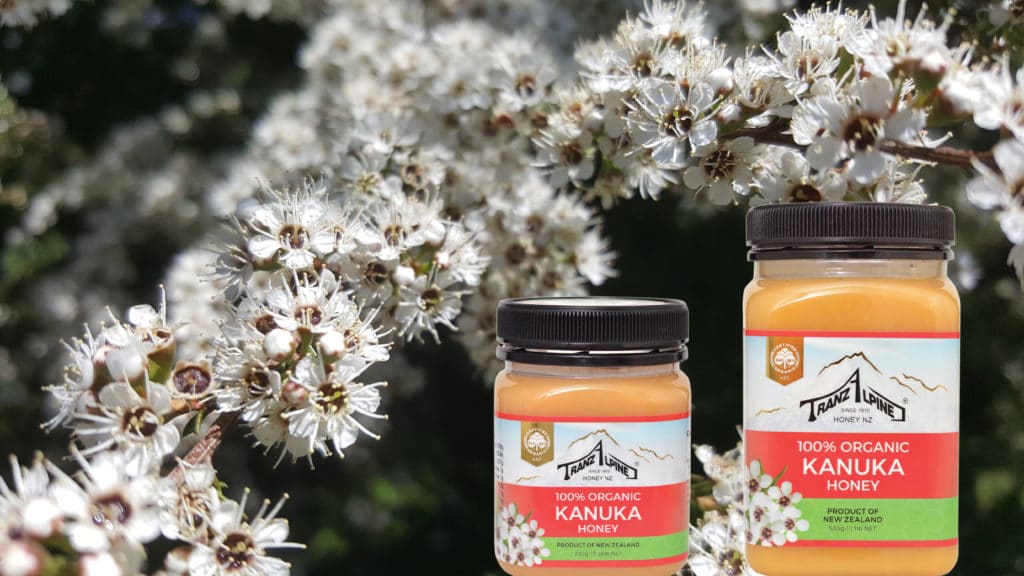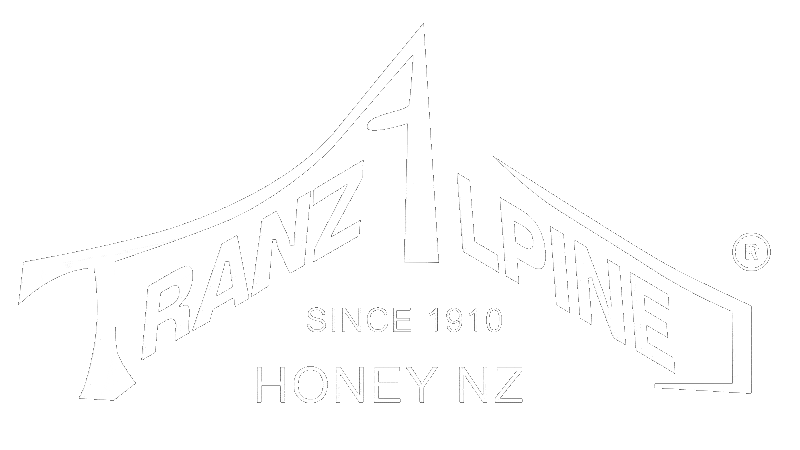
Is Kanuka honey next super-food?
The rise of the next super-honey.
We’d like to introduce you to another New Zealand honey which offers a bit more than just a natural sweetener. Meet Kanuka. A honey that’s coming out of the shadow of Manuka.
Why we love honey
Honey conjures up images of luxury and promise. And over the centuries it’s been also thought to have many healing properties. The ancient Egyptians, Greeks, Chinese and Romans all believed honey to help heal wounds and digestion.
Now modern research is catching up, and evidence is starting to come forward that honey may indeed be more than just a natural sweetener. And they’re starting to find that not all honey is created equal.
What is honey?
Honey is made from nectar collected by bees from flowers. The type of flower they feast from alters the taste and colour of the honey. Research is now suggesting that the type of flower also changes the unique properties of honey.
Honey contains around 200 different substances: sugars (fructose and glucose), protein (amino acids), vitamins, minerals, enzymes and other nutrients including phenolic acids, flavonoids. The exact combination is thought to vary because of many reasons, including what type of flower the honey was produced from and the location of bees and flowers.
Manuka honey is the honey that New Zealand is famous for. You might know Manuka honey for its unique properties. The honey made by bees from the Manuka tree were found to contain a compound Methylglyoxal (MG). Methylglyoxal (MG) is a bio-active substance which at certain concentrations has been shown inhibit bacterial growth.
But research is starting to highlight honey made from the nectar of another New Zealand native as being helpful in other ways.
Watch out Manuka, Kanuka may be super too.
Although traditionally Manuka and Kanuka have both been referred to as “Manuka”, they’re quite different trees. Manuka honey is made when the bees collect nectar from the New Zealand native Mānuka (Leptospermum scoparium) tree. While Kanuka honey is made by the bees that have collected nectar from another New Zealand native, the Kānuka (kunzea ericoides) tree.
- The Manuka tree has bigger single white flowers and small, longer pointed green leaves. Kanuka has smaller clusters of white flowers and rounder green leaves.
- Both are native New Zealand species, although Manuka is more widely found and more tolerant to cold. Kanuka likes it a bit warmer, and doesn’t venture further south than Otago.
- Manuka honey is a golden colour with a rich floral taste. Whereas Kanuka honey has crisp, aromatic butterscotch flavours.
How is Kanuka hot on the heels of Manuka as a super-honey?
Traditionally the bark, seeds and leaves of both Manuka and Kanuka were used by Maori to treat wounds, inflammation, burns, coughs and diarrhoea.
In Manuka honey it’s the MG that’s the key property, in Kanuka it’s the AGP (Arabinogalactan proteins) that are thought to be beneficial. AGP’s are a bio-active substance found in plants.
Results from a study on New Zealand Manuka and Kanuka honey showed Kanuka honey to be particularly effective at increasing the amount of TNF-α (an immune factor involved in the healing process).
Results of a recent study found that New Zealand kanuka honey, applied as a cream five times a day was just as effective as 5% aciclovir cream in the treatment of cold sores.
Which to choose? Kanuka or Manuka?
Manuka honey contains MGO.
Kanuka honey contains AGP.
MGO may be responsible for reducing bacterial growth.
AGP may be responsible for stimulating the immune system.
Both our organic New Zealand Manuka and Kanuka honey tastes awesome.
Discover our Kanuka honey https://tranzalpinehoney.co.nz/product_information/organic-kanuka-honey/
Explore our range of Manuka products https://tranzalpinehoney.co.nz/organic-manuka-honey/
Want to know how we sourced the information for this blog? Here are the references:
Atrott J & Henle T. 2009. Methylglyoxal in manuka honey—correlation with antibacterial properties. Czech Journal of Food Sciences, 27(Spec.), S163-S165.
Braithwaite I et al. 2015. Randomised controlled trial of topical kanuka honey for the treatment of rosacea. BMJ open, 5(6), e007651.
Eteraf-Oskouei T & Najafi M. 2013. Traditional and modern uses of natural honey in human diseases: a review. Iranian journal of basic medical sciences, 16(6), 731.
Gannabathula S et al. 2012. Arabinogalactan proteins contribute to the immunostimulatory properties of New Zealand honeys. Immunopharmacology and immunotoxicology, 34(4), 598-607.
Mavric E et al. 200). Identification and quantification of methylglyoxal as the dominant antibacterial constituent of Manuka (Leptospermum scoparium) honeys from New Zealand. Molecular nutrition & food research, 52(4), 483-489.
Semprini A et al. 2019. Kanuka honey versus aciclovir for the topical treatment of herpes simplex labialis: a randomised controlled trial. BMJ open, 9(5), e026201.
Posted in Natural Health
Share:

